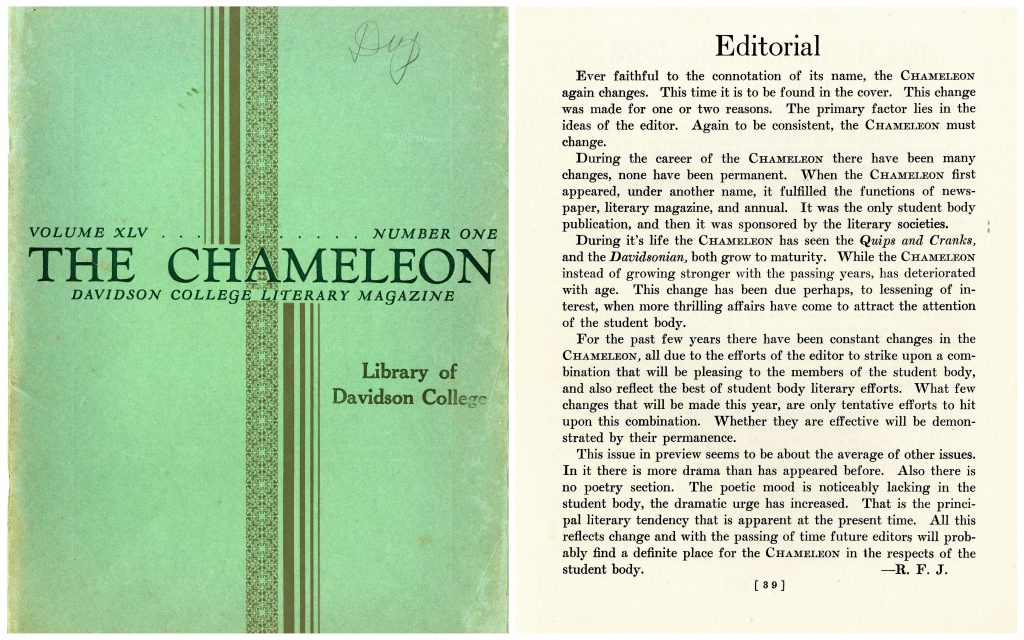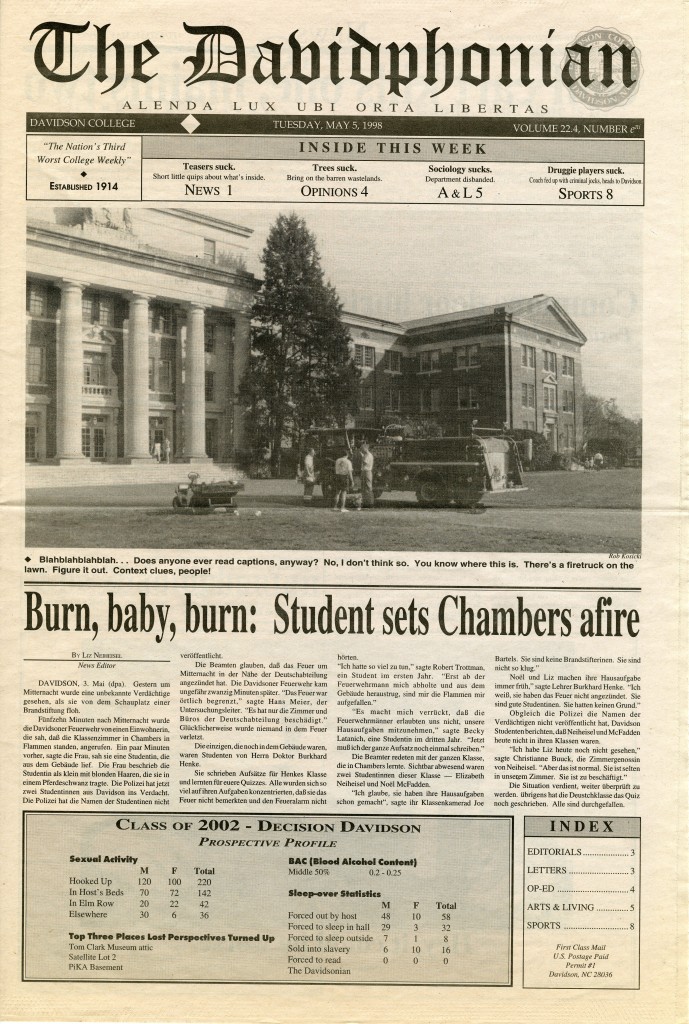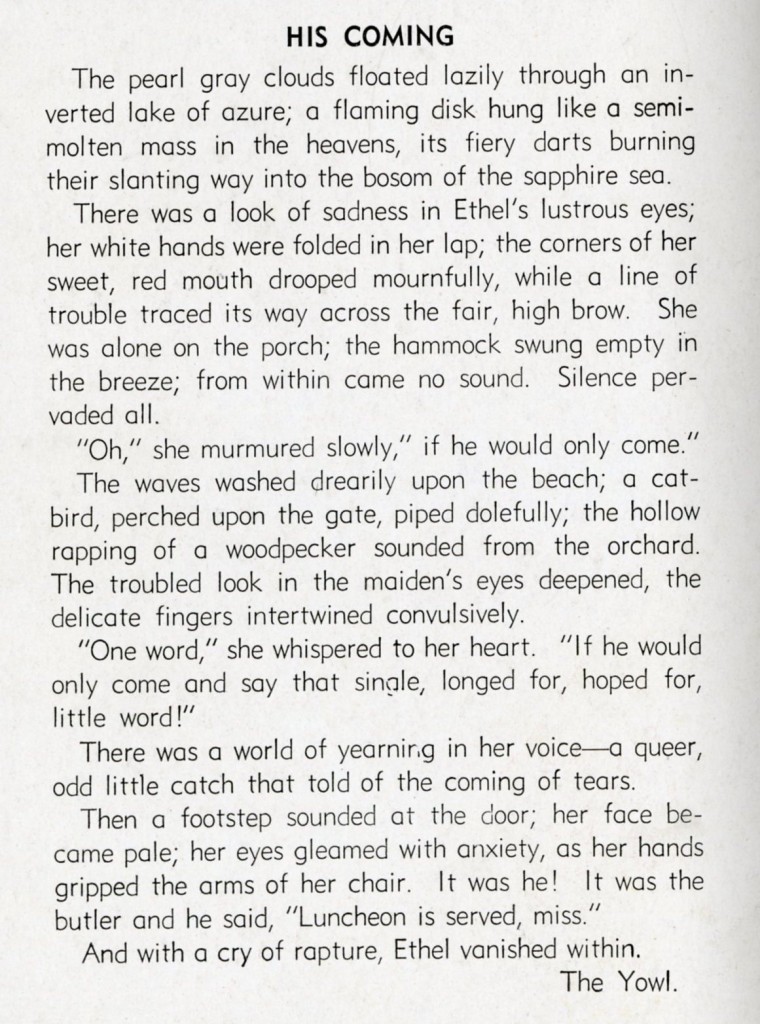This week’s blog highlights a short-lived student-run literary magazine: The Chameleon. The Chameleon, which ran from 1926 through 1930, was born out of the Davidson Monthly, first published in 1870. In the 1880s the Monthly became Davidson College Magazine, and then morphed into The Chameleon in 1926.

The first issue, put out in May 1926, showed a magazine in transition – no single editor was named, but editorial duties were credited to the Blue Pencil Chapter of Sigma Upsilon, which was the local chapter of a southern literary society. By the November 1926 issue, Holcombe M. Austin (Class of 1927), who had had a short story published in that first Chameleon issue a few months prior, was installed as editor. Austin penned the first “Cham’s Colors” editorial, which explained the impetus behind the shift in the publication and its goals:
Last spring an alumnus, three years graduate, when he had finished reading the red-covered pamphlet, the ‘official, licensed magazine’, sent to him from his alma mater, commented, “Why the boys don’t believe in the kind of stuff that’s in here. This wild thing is just a half-baked imitation of the green-backed radical type of magazine. I know that the thinking men in The College aren’t in sympathy with this kind of thing.”
In attempting escape from the brand “collegiate” the college magazine has wandered afield, lost its way, and with that scarified its value as a student publication.
THE CHAMELEON would be otherwise, would be distinctly Davidson, distinctly student… CHAM wants on his pages the color of student opinion and thought.

The Davidsonian covered the release of the December 1926 Cham in their December 16 issue, explaining that “various types of criticism received concerning the first number of this magazine have aided materially in molding the form of this edition.” The story went on to explain the recurring design scheme of The Chameleon:
The Chameleon will begin its policy of changing colors every issue with this edition. The cover of this number being a light blue, the name of the magazine and the usual cut being printed with dark blue ink and shaded with silver. This combination will make as striking an appearance as the jacket in which the first edition was enclosed.

The cover design of The Chameleon followed this pattern from November 1926 until February 1930. In the December 1936 issue, editor Holcombe M. Austin expanded upon the purpose of the magazine:
The cry of every college editor, the cry, for that matter, of every editor who pilots a magazine of literary pretensions, is for the distinctive, “the original.” Not that the bizarre or extreme is demanded, but when there comes to the editor’s desk a short story or essay through strangely characteristic style or curiousness of subject matter achieves the unusual, his heart is filled with gladness. He clasps the manuscript to his bosom and gives praise… CHAM is looking forward to spring raiment. Then, as now, color without, and so help him students, within!
After this editorial no others were published in the magazine until what would be its last issue in February 1930. In that issue, which also featured a new cover design, editor-in-chief Robert F. Jarratt (Class of 1930), explained the changes to the magazine and hinted at its uncertain future:
Ever faithful to the connotation of its name, the CHAMELEON again changes… During it’s life the CHAMELEON has the Quips and Cranks, and the Davidsonian, both grow to maturity. While the CHAMELEON instead of growing stronger with the passing years, has deteriorated with age…
For the past few years there have been constant changes in the CHAMELEON, all due to the efforts of the editor to strike upon a combination that will be pleasing to the members of the student body, and also reflect the best of student body literary efforts. What few changes that will be made this year, are only tentative efforts to hit upon this combination. Whether they are effective will be demonstrated by their performance.

Unfortunately, The Chameleon‘s redesign did not save it, and the February 1930 issue was its last. College humor magazines The Yowl and Scripts ‘N’ Pranks sprung up in 1935 and 1936 to fill the gap, and Davidson College was without a strictly literary student-run magazine until Hobart Park began in 1978.





















